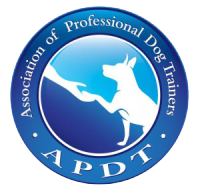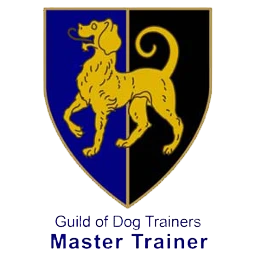Dog anxiety is widespread, and its severity and causes can depend on the individual dog. For example, rescue or stray dogs that have previously been exposed to trauma may find that it affects their reaction to everyday life. If your dog is showing fear responses, keep reading to find out some simple and effective tips to soothe their nerves, including a dog anxiety trainer.
- Why is my Dog Anxious?
- What Does Anxiety Look Like In Dogs?
- When To Take Action
- How To Reduce Dog Anxiety
Why Is My Dog Anxious?
Dog anxiety can be caused by a variety of factors. It can be related to trauma from a previous home or life as a stray. It can even be something as simple as a bad experience with an object, person, or place when they were a puppy.
There are several specific types of anxiety, including fireworks anxiety and separation anxiety.
What Does Anxiety Look Like In Dogs?
There are a variety of ways in which anxiety manifests in dogs, including:
Changes In Body Language
Understanding your dog’s body language is key in recognising anxiety symptoms. It is important to be able to recognise changes in their behaviour, so you can help manage the situation.
Potential signs to look out for include:
- Body tension
- Lowered tail
- Ears held back and closer to their head
- Furrowed brow
- Wrinkling of skin between the ears
- Flicking out of the tongue
- Tightening facial muscles
- Licking their lips
- Eyes looking towards perceived threat
- Body weight shifted backwards
- Raising a paw apprehensively
When they first become unsure about something, they may also show signs of slowing down, as well as blinking or narrowed eyes. They may even start yawning (not due to tiredness).
Additionally, they can find direct eye contact intimidating. This means that you may see them turning their head away from whatever is bothering them.
Tentatively Approaching The Source Of Their Concern
Your dog may want to approach the source of their fear to investigate it, despite said fear. They may opt to approach with a lowered body, with their head low and focused on the object of their worry. Additionally, their tail may be wagging fairly quickly, and they may even approach and then retreat.
Whilst approaching, they may continue to show signs of concern, such as:
- Eyes squinting or being shut tightly
- Ears back
- Edges of their mouth pulled back and up at the sides
- Teeth exposed – this is different to an aggressive display of teeth, and is instead referred to as an “appeasement grin”, “submissive grin” or “smile”. Essentially, they use this to try to diffuse conflict.
Physical Changes
As well as revealing it in their body language, your dog may also show more physically dynamic signs of anxiety. These include:
Shaking It Off
When your dog has had a challenging experience, they may perform a full body shake. This is likely them shaking off the situation.
Pacing
Your dog may be unable to settle or sit still, pacing around. Similarly, they may be easily startled or more jumpy than usual.
Jumping Up, Pawing You Or Mouthing
Additionally, your dog may seek more attention from you than normal. This could include jumping up, tapping you with their paw, mouthing or mounting when they would not normally do these things.
Painting, Trembling Or Shivering
When panting, shivering or trembling is completely unrelated to exercise or temperature change, it is likely a sign of anxiety.
Hiding
Your dog may even physically move away from, or actively avoid, what is worrying them.
Not Following Commands
They may also find it challenging to follow commands they know, due to the stress response in their body making it harder for them to concentrate.
Additional Environmental Responses
Depending on what is causing their stress, your dog may suddenly stop or sit near something that is bothering them. They may also scratch at it, start sniffing around or lick themselves repeatedly.
When To Take Action
The more easily you can respond to the subtle signs of their discomfort, the more you can prevent the more severe signs that may lead to confrontation or harm.
When your dog shows any of the signs below, it is important to take action:
An Appeasement Roll
Also known as a submissive roll, your dog may roll onto their back or sides to indicate that they do not pose a threat. This is not to be confused with them rolling over to be tickled and often happens alongside symptoms such as:
- Tucked tail
- One or both back legs are raised and held tensely
- Body tension
- Ears held back
- Looking at the things that they are bothered by
If a person or animal continues to interact with or approach them in this position, they may react with more defensive behaviours. These include growling or snapping.
Freezing Or Lunging Forwards
This behaviour occurs when the dog is feeling very threatened. They may lunge forward and even bark, snap and/ or growl at what is scaring them. In this position, they are likely to:
- Hold tension throughout the body and at the base of the tail
- Hold their tail up or outwards
- Shift their body weight forward
- Have their ears forward or upright
- Stare directly at the threatening individual or animal
- Have their lips pulled up to expose their teeth, in a C-shaped snarl
- Growl
Additionally, they may move very slowly or freeze, or even snap or bite at the air as a warning gesture. In this position, they may:
- Tuck their tail
- Lean away from the perceived threat
- Keep their head low
- Growl and show their teeth to warn the threat
- Have their ears pulled back
How To Reduce Dog Anxiety – Treatment & Prevention
Do Not Ignore Their Feelings
Ignoring or discouraging initial fear responses can show them that subtle signs of fear do not work. This may then lead to them lashing out and resorting to more severe responses, as they may feel they have no other option.
Keep A Consistent Schedule
If your dog is prone to anxiety when new things are introduced, it is important to keep a routine as much as possible, so that they feel comfortable. Any new concepts or people should be introduced gradually to avoid overwhelming them.
Avoid Their Triggers
Whenever you notice a trigger for any of the behaviours listed, you should avoid it as much as possible. This may even entail completely keeping them away from the person, place or situation in question. Additionally, you should seek help from a professional to help manage their response to the situation.
Avoid Eye Contact
Dogs can be intimidated by extended periods of direct eye contact. Therefore, it is recommended that you avoid doing so, so as not to overstimulate them.
Create A Safe Space
Creating a safe space, such as a crate or corner of the room for your dog to retreat to to decompress can be helpful.
Grooming
If your dog is relaxed by grooming, you can definitely try speaking to them in a soothing voice whilst gently grooming them to calm them down.
Get A Calming Vest
Calming vests, like weighted blankets for humans, give a slight amount of weight. This offers comfort to your dog, as it simulates contact. If you have established trust with your dog, they may benefit from comforting contact from you. However, it is important to take care with physical contact if they are in a combative state.
Make Sure To Socialise Them Properly
Early and effective socialisation can be the key to ensuring that your dog reacts to situations, dogs and people in a calm manner. This is because it gradually exposes your dog to these potential triggers, desensitising them. If you are struggling with socialisation, or you have adopted an older dog, we are here to help. Find out about our socialisation training here.
Keep Them Company
If your dog suffers from separation anxiety, it may be helpful to find someone to keep them company if you are going to be gone for a longer period. Dog hotels are a great solution to this, offering them friends and comfort while you are away.
Be Mindful With Visitors
Any new people or places should always be introduced slowly, to allow your dog to get used to them. This is especially important if they are predisposed to be anxious. This could be to do with an underlying medical condition or previous trauma associated with rescue dogs.
Use Desensitisation Techniques
Essentially, the purpose of desensitisation is to rewire your dog’s emotional response to certain situations. It does this by gradually exposing them to the triggers over time, only changing the intensity when the dog experiences it at a level they can cope with.
Make Sure They Get Plenty Of Exercise & Mental Stimulation
Exercise, toys, and puzzles are a great way to help your dog let off extra steam, and redirect some of their anxious energy.
Speak To Your Vet
If your dog appears fearful without an identifiable cause, it is important to speak to your vet. They will be able to check whether their anxiety is related to an underlying health condition, as well as making recommendations that are specific to your dog.
Calming Dogs Down Fast In The Moment
Every dog is different, and it is important to pay attention to your dog’s individual needs. If your dog is displaying signs of anxiety, you can resort to any of the following techniques, if they are relevant to them:
- Take them to an established safe space, such as their crate
- Remove them from the triggering situation, person, or place as soon as possible
- Avoid punishment, speaking to them in a soothing tone
- Provide an outlet for their excess energy, such as a favourite toy
- Try a weighted anxiety vest
- Play calming music
- Gently pet them
Remedies such as calming pheromone diffusers can also help curb your dog’s anxiety around the house. If your dog’s anxiety is severe or persistent, you should always speak to your veterinarian. They will be able to advise you on the best remedies and treatments for your dog.
Can A Trainer Help With Dog Anxiety?
If your dog is suffering from anxiety, we would recommend seeking the help of a behaviourist. They will be able to use their extensive expert knowledge to determine the causes and triggers associated with your dog’s anxiety. They will also be able to provide the relevant training to help them manage it.
Additionally, training can help establish trust between a dog and their owner, making them feel more at ease.
We offer professional behaviourist classes designed to help reinforce good behaviour, with training bespoke to your dog’s needs.
Call us on 01524587315 or get in touch online to find out how we can help.



